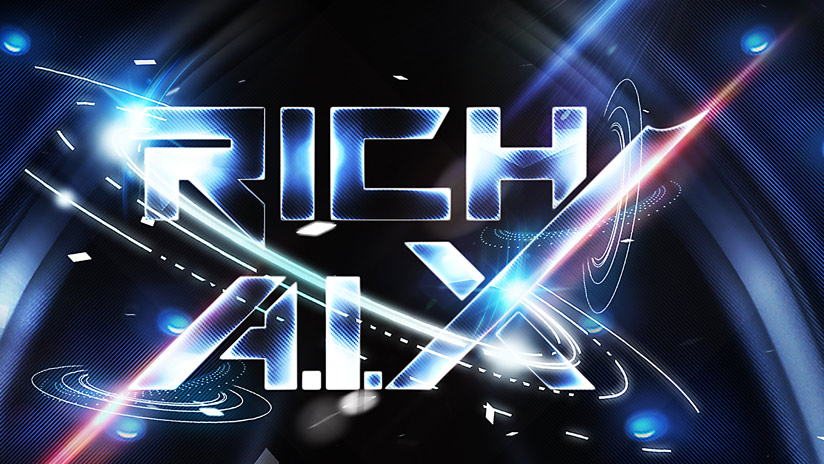ChatGPT : An AI-Language Model for Natural Language Processing | OpenAI | TheLogicWorld | 5 Minutes
ChatGPT is an AI language model developed by OpenAI. It is based on the GPT-3.5 architecture and is designed to understand and respond to natural language queries in a conversational manner. The model has been trained on a vast corpus of text data, allowing it to generate responses on a wide range of topics, including current events, science, technology, and more. ChatGPT's natural language processing capabilities have made it a valuable tool for various applications, including chatbots, virtual assistants, and automated customer service systems.
One of the significant benefits of ChatGPT is its natural language processing capabilities. The model uses advanced algorithms and neural networks to understand the nuances of human language, allowing it to generate responses that sound natural and authentic. This feature is especially crucial in chatbots and virtual assistants, where customers expect personalized and human-like interactions. ChatGPT's natural language processing capabilities have made it a popular tool for companies looking to automate customer service and improve customer experience.
The model has also been praised for its versatility and ability to handle complex queries. It can generate responses to a wide range of questions, from factual queries to more complex, open-ended ones. This versatility has made it a valuable tool for various industries, including healthcare, finance, and education.
One of the challenges of developing an AI language model like ChatGPT is training the model on a vast corpus of text data. OpenAI used a combination of unsupervised and supervised learning techniques to train the model on a diverse set of texts, including books, websites, and social media. The training data included over 570GB of text data, including over 45TB of web pages, making it one of the largest language models ever created.
The model's architecture is based on a transformer network, a type of neural network that excels at handling sequential data, like natural language. The transformer network consists of multiple layers of attention mechanisms that allow the model to focus on different parts of the input sequence. The model's ability to handle long input sequences is one of its unique features, enabling it to generate responses that are more contextually relevant and coherent.
The attention mechanisms used in ChatGPT's architecture are also used to generate new text data. This feature is called autoregression, and it allows the model to generate new text data one word at a time. The autoregression feature is one of the reasons why ChatGPT can generate such high-quality responses to natural language queries.
Another unique feature of ChatGPT is its ability to perform zero-shot learning. Zero-shot learning refers to the model's ability to generate responses to queries on topics it has not been explicitly trained on. For example, if a user asks ChatGPT a question about astrophysics, the model can generate a response even if it has never been explicitly trained on astrophysics. This feature makes ChatGPT a powerful tool for generating responses to new and emerging topics.
Despite its advanced capabilities, ChatGPT does have limitations. Like all AI models, it is not perfect and can generate responses that are inaccurate, biased, or inappropriate. This limitation is particularly relevant in chatbots and virtual assistants, where users expect accurate and reliable responses. Another limitation of ChatGPT is its lack of common sense knowledge. The model can generate responses that are contextually relevant, but it may not have the common sense knowledge required to understand the underlying meaning of a query.
In conclusion, ChatGPT is a powerful and versatile AI language model that has revolutionized natural language processing. Its ability to understand and respond to natural language queries in a conversational manner has made it a valuable tool for various applications, including chatbots, virtual assistants, and automated customer service systems. While the model has its limitations, its advanced capabilities and unique features make it a promising
Contact us - thelogicworld3@gmail.com
ChatGPT is an AI language model developed by OpenAI. It is based on the GPT-3.5 architecture and is designed to understand and respond to natural language queries in a conversational manner. The model has been trained on a vast corpus of text data, allowing it to generate responses on a wide range of topics, including current events, science, technology, and more. ChatGPT’s natural language processing capabilities have made it a valuable tool for various applications, including chatbots, virtual assistants, and automated customer service systems.
One of the significant benefits of ChatGPT is its natural language processing capabilities. The model uses advanced algorithms and neural networks to understand the nuances of human language, allowing it to generate responses that sound natural and authentic. This feature is especially crucial in chatbots and virtual assistants, where customers expect personalized and human-like interactions. ChatGPT’s natural language processing capabilities have made it a popular tool for companies looking to automate customer service and improve customer experience.
The model has also been praised for its versatility and ability to handle complex queries. It can generate responses to a wide range of questions, from factual queries to more complex, open-ended ones. This versatility has made it a valuable tool for various industries, including healthcare, finance, and education.
One of the challenges of developing an AI language model like ChatGPT is training the model on a vast corpus of text data. OpenAI used a combination of unsupervised and supervised learning techniques to train the model on a diverse set of texts, including books, websites, and social media. The training data included over 570GB of text data, including over 45TB of web pages, making it one of the largest language models ever created.
The model’s architecture is based on a transformer network, a type of neural network that excels at handling sequential data, like natural language. The transformer network consists of multiple layers of attention mechanisms that allow the model to focus on different parts of the input sequence. The model’s ability to handle long input sequences is one of its unique features, enabling it to generate responses that are more contextually relevant and coherent.
The attention mechanisms used in ChatGPT’s architecture are also used to generate new text data. This feature is called autoregression, and it allows the model to generate new text data one word at a time. The autoregression feature is one of the reasons why ChatGPT can generate such high-quality responses to natural language queries.
Another unique feature of ChatGPT is its ability to perform zero-shot learning. Zero-shot learning refers to the model’s ability to generate responses to queries on topics it has not been explicitly trained on. For example, if a user asks ChatGPT a question about astrophysics, the model can generate a response even if it has never been explicitly trained on astrophysics. This feature makes ChatGPT a powerful tool for generating responses to new and emerging topics.
Despite its advanced capabilities, ChatGPT does have limitations. Like all AI models, it is not perfect and can generate responses that are inaccurate, biased, or inappropriate. This limitation is particularly relevant in chatbots and virtual assistants, where users expect accurate and reliable responses. Another limitation of ChatGPT is its lack of common sense knowledge. The model can generate responses that are contextually relevant, but it may not have the common sense knowledge required to understand the underlying meaning of a query.
In conclusion, ChatGPT is a powerful and versatile AI language model that has revolutionized natural language processing. Its ability to understand and respond to natural language queries in a conversational manner has made it a valuable tool for various applications, including chatbots, virtual assistants, and automated customer service systems. While the model has its limitations, its advanced capabilities and unique features make it a promising
Contact us – thelogicworld3@gmail.com











